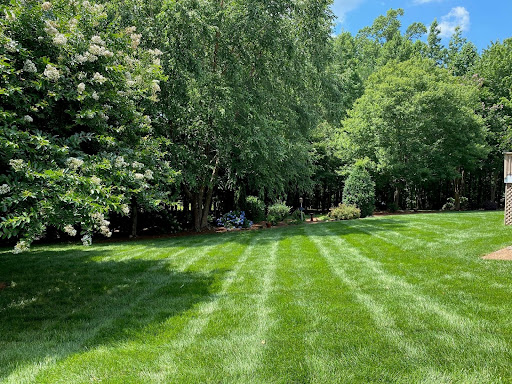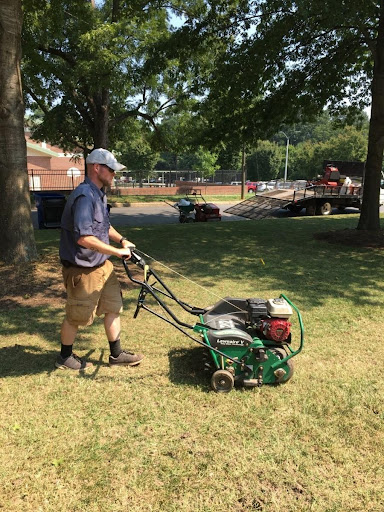Overcome lawn care challenges with this content.
The end of summer is one of the more difficult times of the year for lawn care in this part of the country, particularly for cool-season lawn types like fescue. Expert support can mean long-term savings, results and peace of mind.
Here are some of the main challenges we’re seeing, including high air and ground temperatures, diseases and weeds. While warm-season turf is an option (you may even already have it) unless your yard gets at least 8 hours of full sun a day, it will have trouble properly growing and surviving.
Having lost root mass since ground and air temperatures reached 80 degrees, cool-season turfs are using more energy than they can store. This leads to decline even with proper irrigation.
Pre-emergent weed control applications in late winter/spring have broken down by now, which allows crabgrass and broadleaf weeds (like chamberbitter) to germinate and develop. While your first instinct may be to return to pre-emergent weed control applications, these will prevent cool-season lawn seed germination in the fall.


This mimosa tree-looking broadleaf weed was introduced to our area about 15 years ago. It’s a prolific seeder, with each plant moving hundreds of seeds around the Carolinas. Usually first appearing around pine straw and bird feeders, it will grow straight up like a tree until mowed.
While other broadleaf weeds can often be controlled with available weed products, this is a difficult one in particular. We identify customers that have this weed and try to make multiple weed control applications to gain some ground over spreading.


Generally, crabgrass will germinate in areas with thin turf, hard surfaces and/or high spots. Fortunately, it will often stop germinating around this time of year. As mentioned, pre-emergent control breakdown needs to happen to allow for seeding, so control products should not be used at this time.



Most managed lawns in NC will have to deal with some level of brown patch fungus. However, this is just one of many diseases. Other common ones include dollar spot and pythium, which we can also assist with.
For both new and existing cool-season lawns, seeding should be done annually in late summer or early fall, around September or early October. This gives the turf a chance to grow and mature without encountering the problems that spring may pose. When planted in spring, turf is even more susceptible to drought, heat and fungal diseases. If you don’t plan on seeding at all, just know that this will leave your turf susceptible to challenges during the year that can create further damage and injury.
Fairway Green’s hand-selected fescue seed mix, Southern Perfection, contains three turf-type tall fescues tested to be the best in the industry for strong, green growth:
These varieties were specifically chosen because they have the highest heat and drought tolerance/recovery, disease/insect resistance and color/texture quality. Backed by 0% weed and 0% crop contamination, Southern Perfection is WaterStar® qualified through the Turfgrass Water Conservation Alliance (TWCA) and carries a Blue Tag Certification that guarantees its purity.




Core aeration seeding is a common practice for seeding cool-season lawns in the fall, which Fairway Green is happy to offer. This process involves creating small holes in soil (done by removing thatch and soil) reducing compaction and helping prepare the seeding bed. This ensures the best seed-to-soil contact, which is crucial for good germination and lawn establishment.
Core aeration will also:
PLEASE NOTE: Due to factors beyond our control (watering, soil and climate conditions, adverse weather conditions, etc.) we cannot guarantee a stand of turf after seeding. We can guarantee, however, that Fairway Green will do the seeding job properly and use the best seed available on the market. If you have any concerns about services performed by us, you MUST contact us within three business days of when they were done.
Otherwise, success is in your hands! Watering is the key, but if you cannot water, just be patient. The seed will still germinate but it will take much longer.